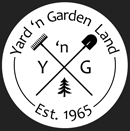Fabulous Fall Color
![]()
When the days get shorter and the temperatures begin to cool, you will notice the fiery hues of autumn lighting up gardens and the landscape all around. While most trees change color, some are more vibrant than others. We have created a list of some of our favorite trees for fall color.
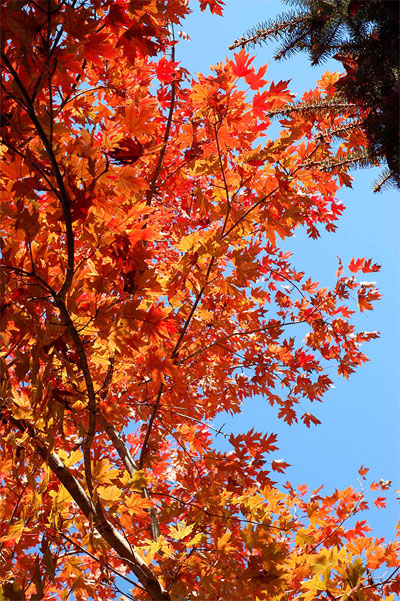
Red Maple (Acer rubrum) is one of the most popular trees for autumn color. In spring, the leaves emerge tinged red, turning to green in summer. In the fall, the tree transforms into shades of red and orange. Growth habit ranges from round and wide to pyramidal and narrow depending on the variety. Average tree height is 40 to 60 feet. Plant in full sun and average soil.

Redbud (Cercis) is a small tree grown as an understory tree in forests of the southeast. In the spring, lovely heart-shaped leaves appear. Summer leaf colors range from green to burgundy turning yellow, red or orange in the fall depending on the variety. Growing to 20-25 feet, they are a good choice for patio trees. Plant in full to part sun in moist, well-drained soil.
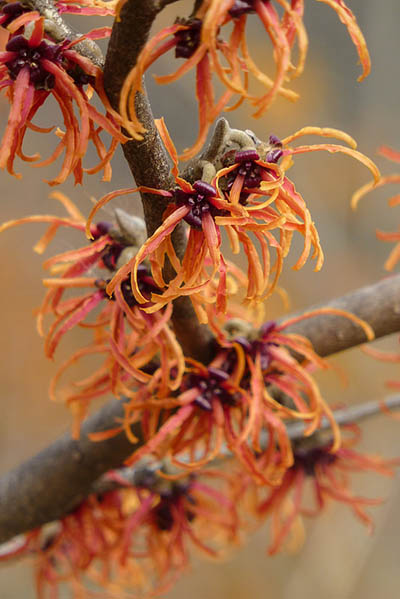
Witch Hazel (Hamamelis) is technically a shrub, however, it can be pruned as a small tree, about 10-12 feet tall and wide. Leaves emerge bright green in the spring turning gold in the fall. Fragrant yellow flowers appear in late winter. Great in shrub borders or as an understory tree. Witch hazel prefers moist, acidic, organically rich soils. Plant in full sun for best color and flowering.
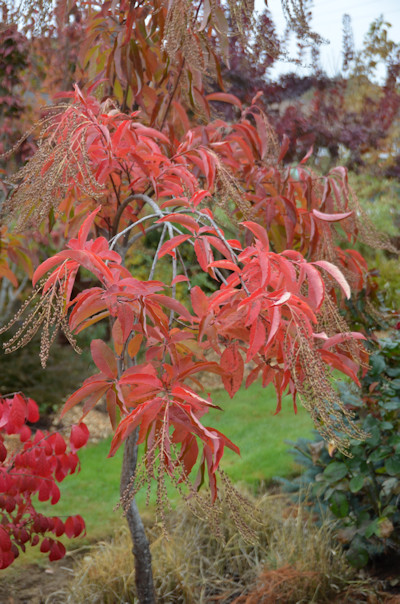
Sourwood (Oxydendrum arboreum) is a unique Southeast native that slowly grows to 15-30 feet. The leaves are bronze tinted in spring, maturing to green in summer, and red and orange in the fall. Bell-shaped clusters of ivory flowers begin to appear in summer and remain on the tree through the season. Hummingbirds love them! Plant in full sun for best flowering and fall color.
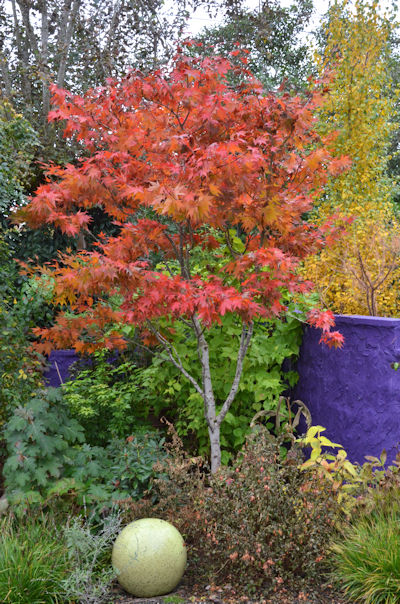
Japanese Maple (Acer palmatum) is perhaps the best-known tree for vivid fall foliage. Growth habits range from tall and upright to mounded and shrubby. Leaves are deeply cut and come in a variety of colors, depending on the variety. Most have stunning displays in the fall with orange, red and purple foliage. Plant in full to part-sun in moist, well-drained soil.
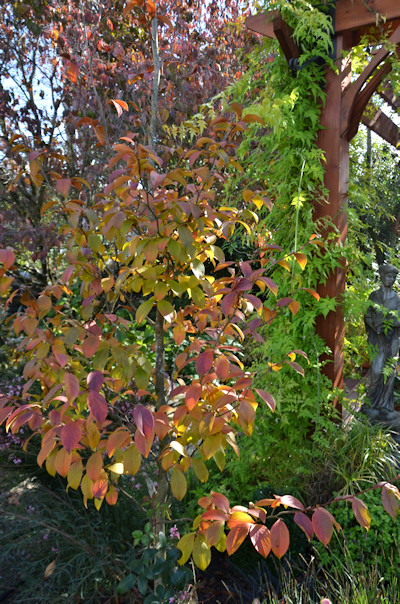
Japanese Stewartia (Stewartia pseudocamellia) is an elegant, slow-growing pyramidal shaped tree that can eventually reach 30-40 feet. In summer lovely white camellia-type flowers with orange-yellow centers appear. In the fall the leaves turn orange-red. Plant in full sun to part sun in moist, well-drained soil. Water regularly in hot, dry weather.
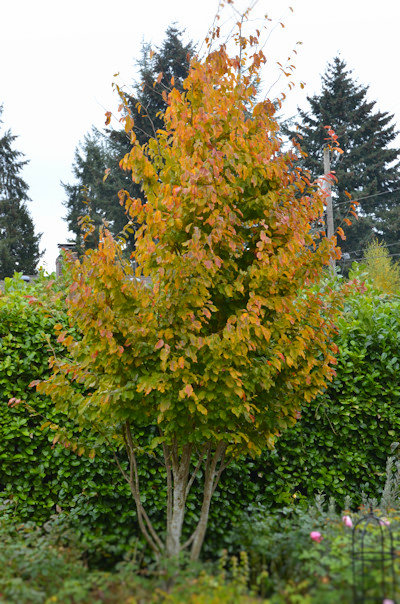
Persian Ironwood (Parrotia persicaria) is a stunning small, multi-stemmed tree related to the witch hazel. Small, dark red flowers bloom in the spring followed by green leaves emerging as red. Growing 15-25 feet tall and wide, this colorful tree is attractive throughout the year, but especially in the fall when the leaves are a mix of gold, yellow and orange. This is a good selection for a street tree.
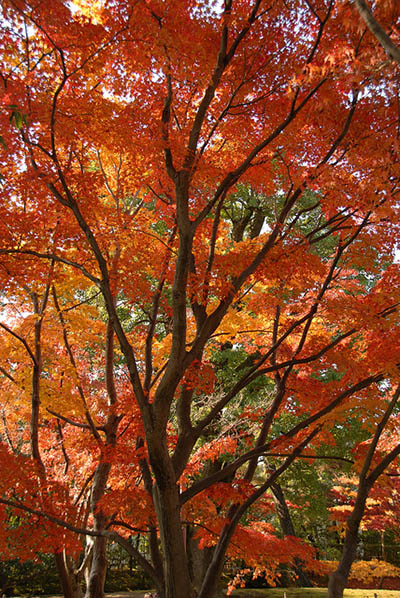
Katsura (Cercidiphyllum japonicum) grows to about 30 feet in gardens but can get much larger in open areas. Small, round leaves emerge reddish purple in spring, maturing to medium green with a slight bluish tinge in summer and turning to shades of gold, orange and red in fall. The falling leaves have a strong fragrance often compared to brown sugar or cinnamon. Grow in full sun to part shade.
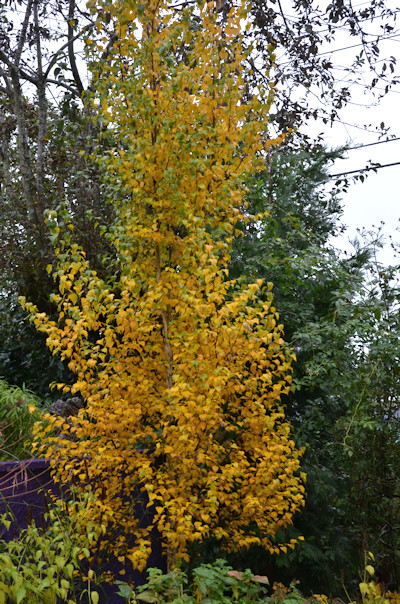
Birch (Betula) trees come in a number of varieties with varying characteristics. Some are multi-stemmed and other are single trunk trees. Some varieties have smooth, white bark while others have colorful, peeling bark. All have delicate bright green leaves which turn bright yellow, gold or orange in the the fall. Mature height ranges from 40 – 70 feet depending on the variety. Plant in full sun. Keep watered in hot, dry weather.
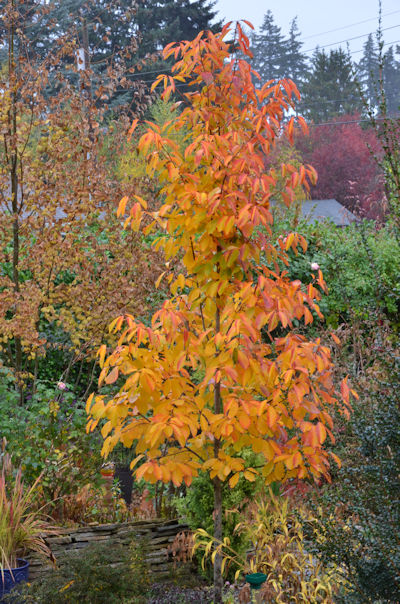
Black Tupelo (Nyssa sylvatica) is an Eastern native growing to 30 – 40 feet tall and 15 – 25 feet wide. In the summer, the leaves are a glossy, dark green transforming to electric orange with tints of bright red that really stand out on cloudy days. It prefers moist, acidic, well-drained soil but can tolerate drought and poor drainage. Choose your location well because the taproot makes it difficult to transplant.
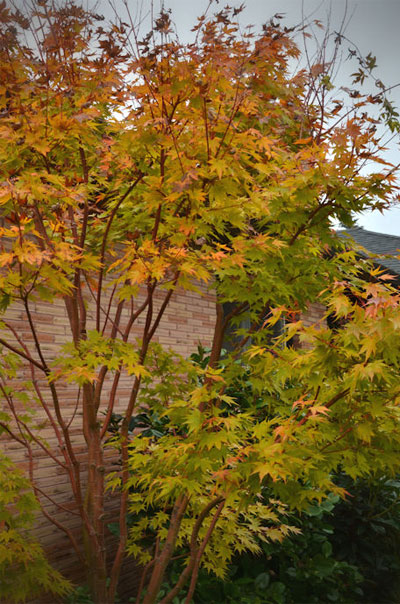
Coral Bark Japanese Maple (Acer palmatum ‘Sango Kaku’) is one of the most popular Japanese Maples. It is an upright grower to about 12-15 feet. Young branches are covered with bright red-coral bark growing more intense in the winter. Leaves are pale green with red margins and turn a bright gold in the fall. Plant in full sun in moist well-drained soil. Prefers some dappled shade in hot areas.
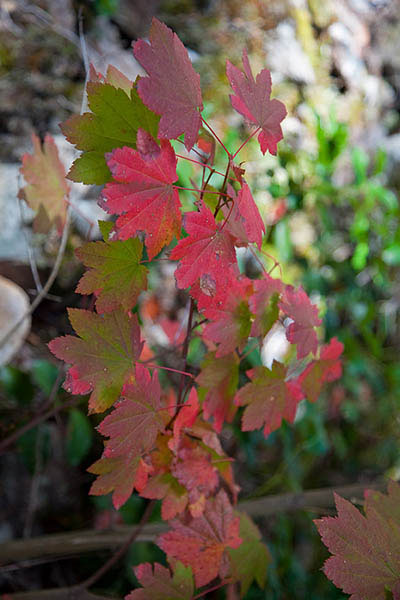
Vine Maple (Acer circinatum) is a Pacific Northwest native. New spring growth is reddish changing to green in the summer. In the fall this tree displays fiery shades of red and orange. After leaf fall, interesting branching patterns are exposed. The vine maple usually forms clumps and grows in a horizontal fashion in the wild. However, in sunnier gardens, the habit is more tree-like, growing to a height of 10-15 feet. Afternoon shade is recommended.
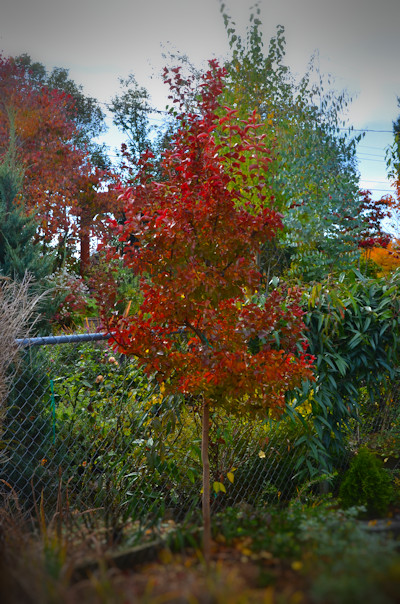
Crape Myrtle (Lagerstroemia) is a multi-stemmed tree that is rapidly gaining popularity in the Pacific Northwest. It is well-known in southern states as a tough tree with dazzling, colorful blooms that resemble crepe paper and a smooth bark that gets more beautiful as it ages. The foliage is dark green changing to yellow, orange and red in the fall. Tree size and flower color depend on the variety. Plant in full sun and provide plenty of water when young. Becomes somewhat drought tolerant with age.
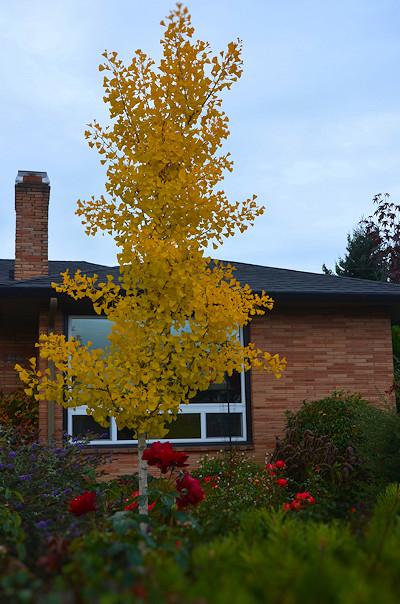
Ginkgo biloba is one of the oldest surviving tree species on earth dating back before the dinosaurs! In addition to its fascinating history, this tree really stands out with its unique, green, fan-shaped leaves. In the autumn they transform to a vibrant gold and hold on to their color to make a beautiful carpet when they fall. Height ranges 25 – 50 feet depending on the variety. Plant in full to part sun and average soil.
YnG
yng
YARD ‘N GARDEN LAND
1501 NE 102nd Street
Vancouver, WA 98686
360.573.7172
STORE HOURS
Monday – Saturday: 8:00am – 6:00pm
Sunday: 9:00am – 5:00pm
HOLIDAY HOURS
Thanksgiving Day: CLOSED
Christmas Eve: Close at 2pm
Christmas Day: CLOSED
December 26th: CLOSED
New Year’s Eve: CLOSED
New Year’s Day: CLOSED
